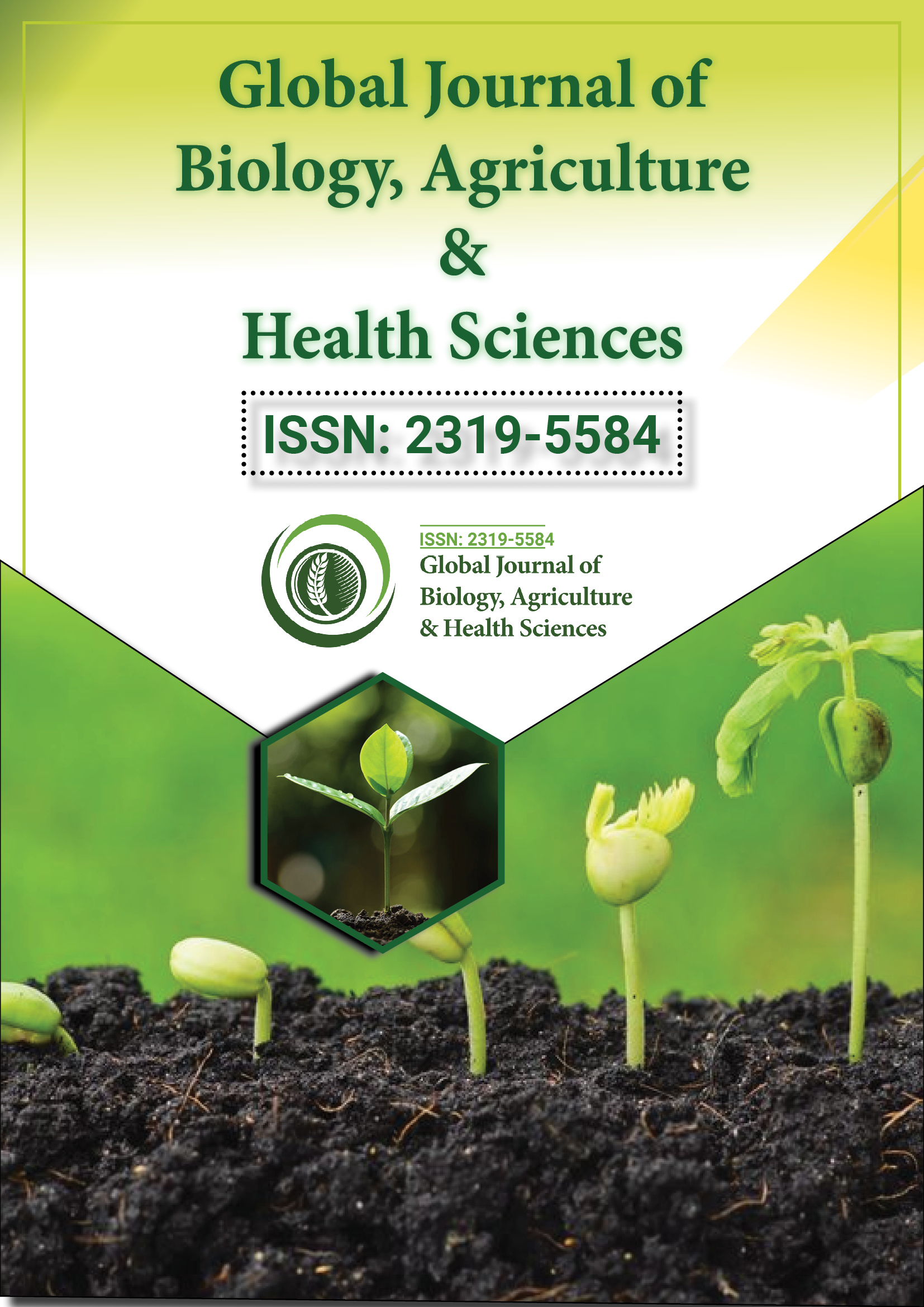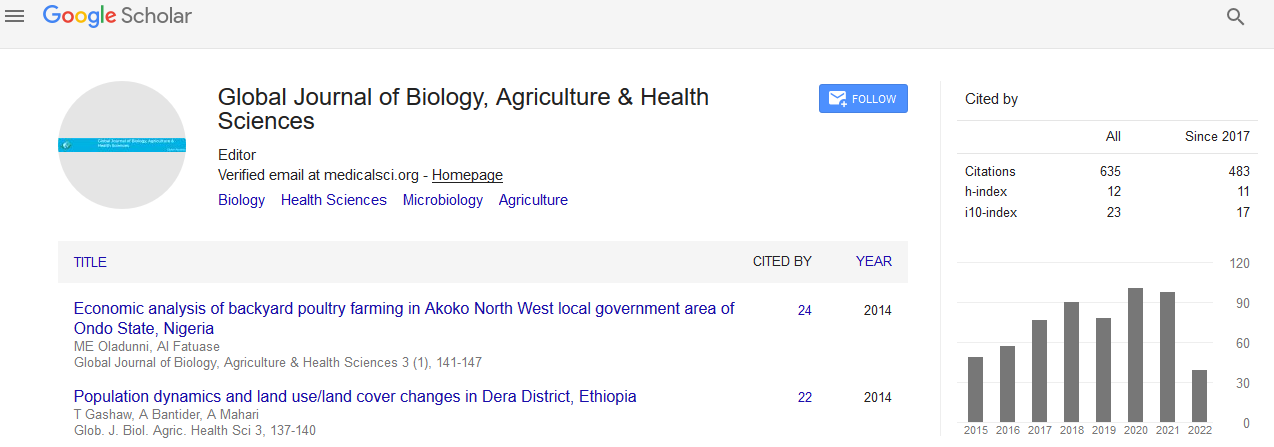Indexed In
- Euro Pub
- Google Scholar
Useful Links
Share This Page
Journal Flyer

Open Access Journals
- Agri and Aquaculture
- Biochemistry
- Bioinformatics & Systems Biology
- Business & Management
- Chemistry
- Clinical Sciences
- Engineering
- Food & Nutrition
- General Science
- Genetics & Molecular Biology
- Immunology & Microbiology
- Medical Sciences
- Neuroscience & Psychology
- Nursing & Health Care
- Pharmaceutical Sciences
Perspective - (2025) Volume 14, Issue 1
Environmental Microbiology and Its Role in Ecosystem Sustainability
Brewer Niguse*Received: 24-Feb-2025, Manuscript No. GJHABS-25-29193; Editor assigned: 26-Feb-2025, Pre QC No. GJHABS-25-29193 (PQ); Reviewed: 12-Mar-2025, QC No. GJHABS-25-29193; Revised: 19-Mar-2025, Manuscript No. GJHABS-25-29193 (R); Published: 26-Mar-2025, DOI: 10.35248/2319-5584.25.14.241
Description
Microbiology is the branch of science that studies microorganisms—tiny living entities that are invisible to the naked eye. These microorganisms include bacteria, viruses, fungi, protozoa, and algae. Despite their microscopic size, microbes play crucial roles in ecosystems, human health, industry, and biotechnology. Microbiology covers the biology, ecology, physiology, genetics, and interactions of these organisms with their environments and hosts. It is a foundational discipline that has transformed medicine, agriculture, and environmental science.
Microbiology is broadly divided into several subfields, each focusing on different types of microorganisms or specific aspects of microbial life. Bacteriology studies bacteria, which are single-celled prokaryotes with diverse shapes and metabolic strategies. Viruses, studied in virology, are acellular entities that require host cells for replication. Mycology examines fungi, including yeasts and molds, many of which are important decomposers or pathogens. Protozoology focuses on protozoa, which are single-celled eukaryotes with complex behaviors. Phycology studies algae, photosynthetic organisms critical for aquatic ecosystems.
One of the central concerns of microbiology is understanding microbial physiology and genetics. Microbes exhibit remarkable metabolic diversity; some use oxygen, while others thrive in anaerobic environments. Chemotrophy, phototrophy and lithotrophy represent various energy acquisition strategies. Microbial genetics studies how microorganisms inherit and express their genes, how genetic material is exchanged, and how mutations arise. Molecular techniques such as DNA sequencing and Polymerase Chain Reaction (PCR) have revolutionized microbiology by enabling detailed genetic analysis and manipulation.
Microbiology plays a pivotal role in diagnosing infections, developing vaccines, and creating antibiotics and antiviral drugs. Understanding microbial resistance mechanisms is critical as antibiotic-resistant strains pose significant public health threats. Conversely, beneficial microbes, such as those in the human gut microbiome, aid digestion, synthesize vitamins, and modulate immunity, highlighting the symbiotic relationships between humans and microbes.
In agriculture, microbiology contributes to soil fertility and crop productivity. Nitrogen-fixing bacteria convert atmospheric nitrogen into forms usable by plants, enhancing soil nutrients naturally. Microbial inoculants, biopesticides and biofertilizers offer sustainable alternatives to chemical inputs. Fungal species help decompose organic matter, recycling nutrients essential for plant growth. Research in plant-microbe interactions aims to improve food security by increasing crop resistance to pests and environmental stresses.
Industrial microbiology harnesses microorganisms for the production of valuable products. Fermentation processes utilize bacteria, yeasts, and molds to produce foods and beverages like bread, yogurt, cheese, beer, and wine. Microbial enzymes are used in detergents, textiles, and paper industries. Pharmaceuticals, including antibiotics, vaccines, and insulin, are often produced through microbial fermentation or recombinant DNA technology. Biotechnology integrates microbiology with genetic engineering to develop new products and therapies, such as gene therapy vectors and biofuels.
Microbiology laboratories rely on a variety of techniques to isolate, culture, and identify microorganisms. Sterile technique prevents contamination during experiments. Culture media provide nutrients tailored to different microbes. Microscopy, including light, electron, and fluorescence types, allows visualization of cell structures. Staining methods, such as Gram staining, differentiate bacteria based on cell wall composition. Molecular assays, antigen detection, and nucleic acid amplification tests enable rapid and accurate identification of pathogens.
Conclusion
Microbiology is an essential scientific discipline that explores the unseen world of microorganisms and their profound influence on life. From understanding the causes of infectious diseases to improving environmental sustainability and advancing biotechnology, microbiology provides crucial knowledge and tools that benefit society. As technology advances, microbiology continues to expand our understanding of life at the microscopic level and offers innovative solutions to some of the world’s most pressing challenges.
Citation: Niguse B (2025). Environmental Microbiology and Its Role in Ecosystem Sustainability. Glob J Agric Health Sci. 14:241.
Copyright: © 2025 Niguse B. This is an open-access article distributed under the terms of the Creative Commons Attribution License, which permits unrestricted use, distribution and reproduction in any medium, provided the original author and source are credited.

